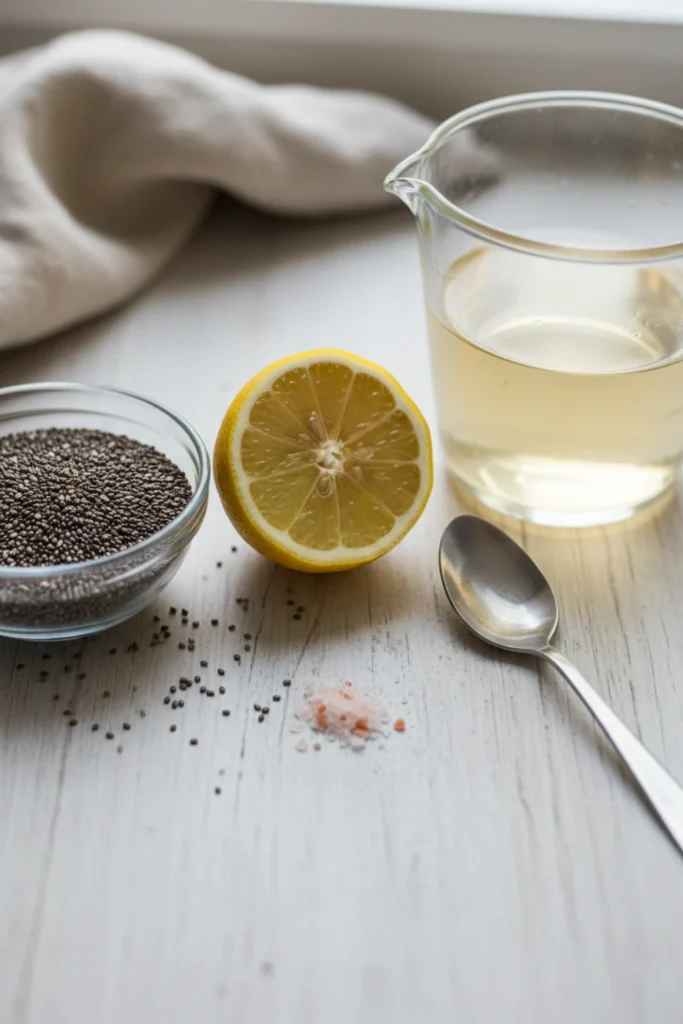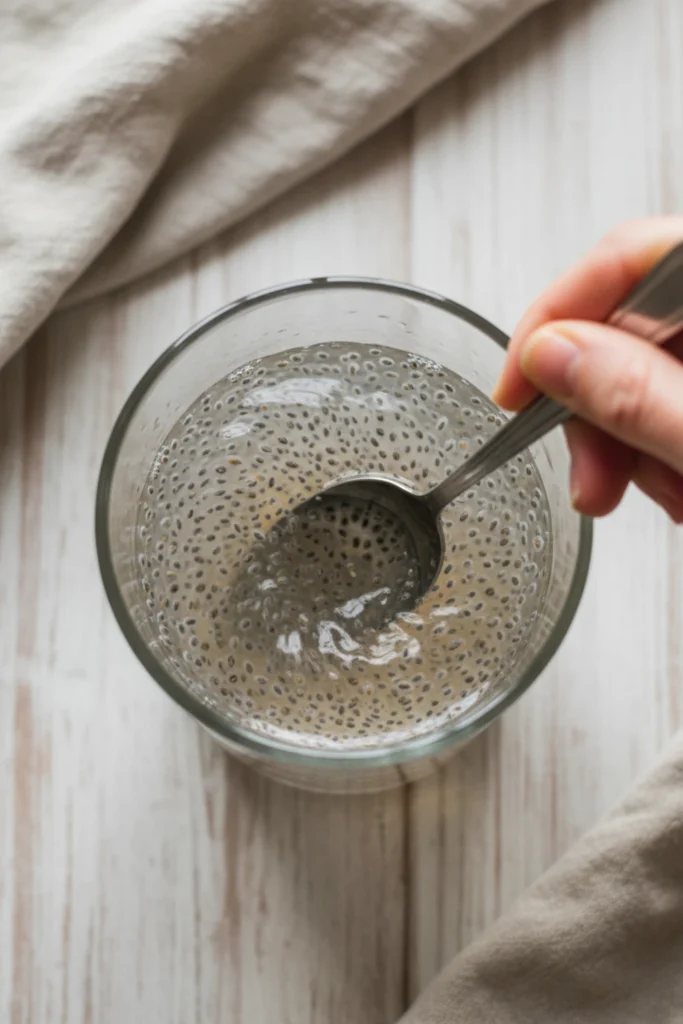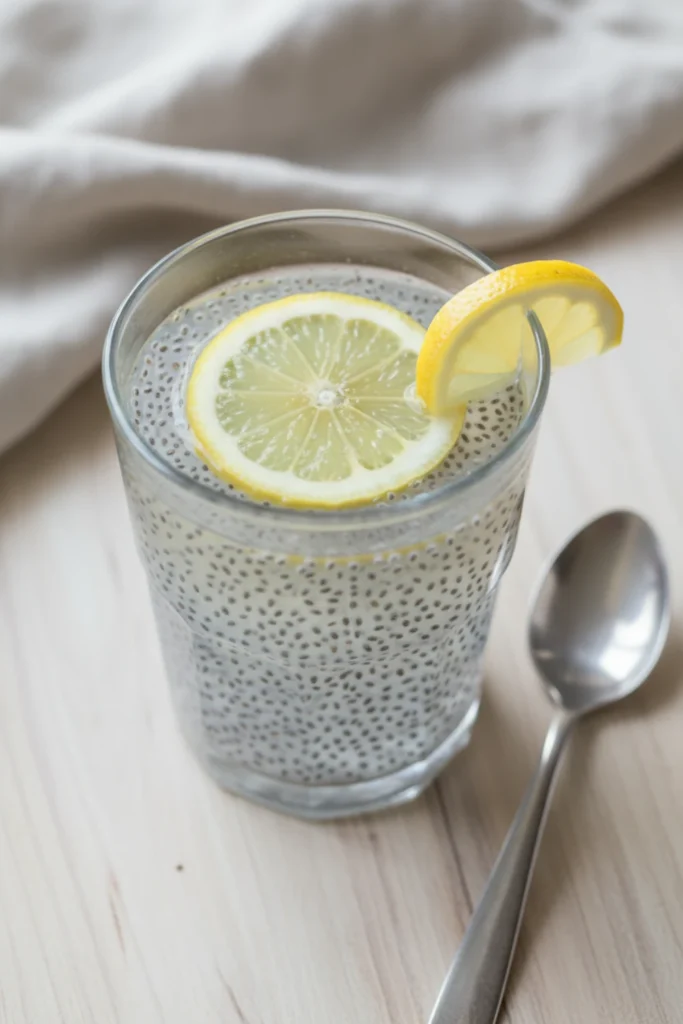· ·
Chia seed drinks have completely changed how I think about hydration, energy, and basically getting through my day without feeling like a dried-out houseplant. This guide covers everything you need to know about making, customizing, and actually enjoying these surprisingly powerful little beverages.
You’ll learn why chia seed drinks work so well for hydration and energy, how to make them properly (because yes, there’s a technique), the different types you can try, and what the science actually says about their benefits. Whether you’re dealing with afternoon energy crashes, constant thirst that water alone doesn’t fix, or you’re just looking for something healthier than your fourth coffee, this guide has you covered.
Why Chia Seed Drinks Actually Work

Chia seed drinks aren’t just trendy; they’re backed by some pretty solid science. These tiny seeds pack around 31.4 grams of fiber per 100 grams, plus they’re loaded with omega-3 fatty acids (about 18.5 grams per 100g), protein, and minerals like calcium, magnesium, and potassium. When chia seeds hit liquid, they absorb 10-12 times their weight and form this gel-like coating that slows down digestion in the best way possible.
Research from Harvard Health shows that just one ounce of chia seeds provides approximately 9.8 grams of dietary fiber, which is linked to decreased risk of coronary heart disease, type 2 diabetes, and inflammation. The fiber content helps with satiety too a study published in the Nutrition Research and Practice journal found that chia seed consumption as a snack reduced short-term food intake and increased feelings of fullness.
But here’s what really sold me: chia seeds contain alpha-linolenic acid (ALA), a type of omega-3 that your body can’t produce on its own. According to research in Nutrients, consuming ALA has been linked to decreased heart disease risk. Plus, when you add minerals like Himalayan salt or pair chia with coconut water, you’re essentially creating a natural electrolyte drink that helps your cells actually hold onto hydration instead of just running through you.
The anti-inflammatory properties are legit, too. A 2024 meta-analysis in the British Journal of Nutrition found that chia seed supplementation significantly reduced C-reactive protein (CRP) levels, especially with interventions lasting 12 weeks or longer at doses over 35 grams per day. This matters because chronic inflammation is linked to pretty much every health issue you want to avoid.
The Basic Chia Seed Water Recipe
Before you go wild with fancy variations, you need to master the foundation. This is the simplest version, the one I make on autopilot now.
Ingredients:
- 1 tablespoon chia seeds
- 1 cup water (warm works best)
- Squeeze of lemon (optional but recommended)
- Tiny pinch of sea salt or Himalayan salt (optional)
Instructions:
- Add chia seeds to your glass first
- Pour in warm water (not boiling speeds up the gel formation without cooking the seeds)
- Stir immediately and vigorously for 30-60 seconds this is critical or you’ll get clumpy gel blobs at the bottom
- Let sit for 10-15 minutes until the seeds puff up and create that gel texture
- Add lemon and salt if using, stir again, and drink
Timing: 5 minutes active, 10-15 minutes total
That’s it. Seriously. The key is that initial stir and using warm water. Skip those steps and you’ll end up with a weird, clumpy mess that’s hard to drink. With warm water and proper stirring, you get a smooth, drinkable texture that’s actually pleasant.
Hydration-Focused Chia Seed Drinks

These are the recipes I reach for when I need serious hydration whether it’s post-workout, after being out in the sun, or when I’ve realized I’ve gone half a day barely drinking anything.
Chia Seed Water with Himalayan Salt – Natural electrolytes for all-day hydration
This was my gateway chia drink. The pink salt adds trace minerals sodium, potassium, magnesium that help your body actually absorb and retain water. It’s subtle but effective, and honestly, it’s become my default morning drink.
Chia Seeds and Coconut Water Recipe – Tropical hydration with natural electrolytes
When plain water feels boring, this is where I turn. Coconut water already has electrolytes, and adding chia seeds makes it more filling and adds that sustained energy element. Perfect for summer or post-workout.
Tadpole Water (Lemon and Chia Seed) – Refreshing citrus hydration
Yes, it’s called tadpole water because of how it looks, and yes, you’ll get over that quickly. The lemon brightens everything up and adds vitamin C, making this ridiculously refreshing. It’s basically elevated lemon water that actually keeps you hydrated.
Energy and Weight Management Drinks

These recipes have a bit more going on nutritionally. They’re more filling, more sustaining, and they work when you need something that bridges the gap between a drink and a snack.
Banana with Chia Seeds for Weight Loss – Filling breakfast smoothie alternative
This one surprised me. Blending banana with chia creates this creamy, satisfying drink that keeps me full for hours. The resistant starch in banana plus chia’s fiber? It’s a satiety powerhouse. I drink this on mornings when I know I won’t have time for breakfast until later.
Chia Seed and Cinnamon Water Recipe – Blood sugar balancing morning drink
Cinnamon adds this warming spice element and may help with blood sugar regulation. I make this one when I want something that feels a little more substantial than plain chia water but isn’t heavy. The cinnamon makes it feel almost dessert-like.
Matcha Chia Seed Pudding – Energizing green tea pudding
Okay, this is technically more pudding than drink, but it belongs here because it’s drinkable-ish if you make it thinner. The matcha adds caffeine and antioxidants, and the texture is thick enough to feel like a meal replacement. I eat this with a spoon on rushed mornings.
The Science Behind Chia Seed Drinks
Let’s get into what’s actually happening when you drink these. Chia seeds (Salvia hispanica) are more than just Instagram-worthy; they have a legit nutritional profile that explains why they work so well in beverages.
The omega-3 content deserves special attention. A study in Nutrients notes that chia seeds are one of the richest plant-based sources of alpha-linolenic acid (ALA), with about 18.5 grams per 100 grams of seeds. Your body converts some of this ALA into EPA and DHA the omega-3s typically found in fish which support brain function, reduce inflammation, and protect heart health.
The hydration piece is fascinating too. When chia seeds absorb water, they form a hydrophilic colloid a gel that slows the conversion of carbohydrates into sugar. This means more stable energy levels and better hydration over time. Research published in the Journal of Strength and Conditioning Research found that athletes who consumed chia seed beverages showed improved endurance performance and maintained hydration status better than those drinking standard sports drinks.
The antioxidant content is nothing to ignore either. According to a 2019 study in Molecules, chia seeds contain chlorogenic acid, caffeic acid, myricetin, and quercetin powerful compounds that protect cells from oxidative stress. This is why chia drinks aren’t just about hydration, they’re delivering protective compounds with every sip.
FAQs
How much chia seed should I put in my drinks?
Start with 1 tablespoon (about 15 grams) per cup of liquid. This creates a drinkable texture without being too thick. You can go up to 2 tablespoons if you want something more filling, but more than that crosses into pudding territory.
Do I need to soak chia seeds before drinking?
Yes, absolutely. Drinking dry chia seeds can cause them to expand in your esophagus, which is uncomfortable at best. Always soak them for at least 10-15 minutes before consuming. With warm water, 5-10 minutes might be enough, but I prefer to let them sit longer for that full gel texture.
Can I drink chia seed water every day?
Most people can drink chia seed water daily without issues. The recommended safe amount is around 15-30 grams of chia seeds per day. That’s roughly 1-2 tablespoons. If you have digestive issues, start with smaller amounts and increase gradually. According to NIH guidelines, chia seeds are generally recognized as safe when consumed in food amounts.
How long do chia seed drinks last in the fridge?
Once prepared, chia seed drinks keep for 2-3 days in the refrigerator in a sealed container. They’ll thicken over time, so you’ll need to add more liquid and stir before drinking. Honestly though, they taste best within 24 hours. I prefer making them fresh daily or in small batches.
Will chia seed drinks help with weight loss?
They can support weight loss efforts, but they’re not magic. The high fiber content (about 10 grams per ounce) helps with satiety, meaning you feel fuller longer. A study in Nutrition Research and Practice found that chia consumption as a snack reduced short-term food intake.
What’s the best time to drink chia seed water?
There’s no single “best” time it depends on your goals. I drink mine first thing in the morning for hydration and steady energy. Some people prefer it pre-workout for sustained energy, or post-workout for recovery and rehydration.
Can chia seeds upset your stomach?
If you’re not used to high-fiber foods, chia seeds might cause bloating or digestive discomfort initially. Start with 1 teaspoon and work your way up. Always make sure the seeds are fully hydrated before drinking, and drink plenty of water throughout the day. If you have IBS or other digestive conditions, talk to your doctor before adding chia to your routine.
Please consult with your healthcare provider before making significant dietary changes, especially if you have existing health conditions, take medications, or are pregnant/nursing. I’m sharing personal experiences, not providing medical advice.

